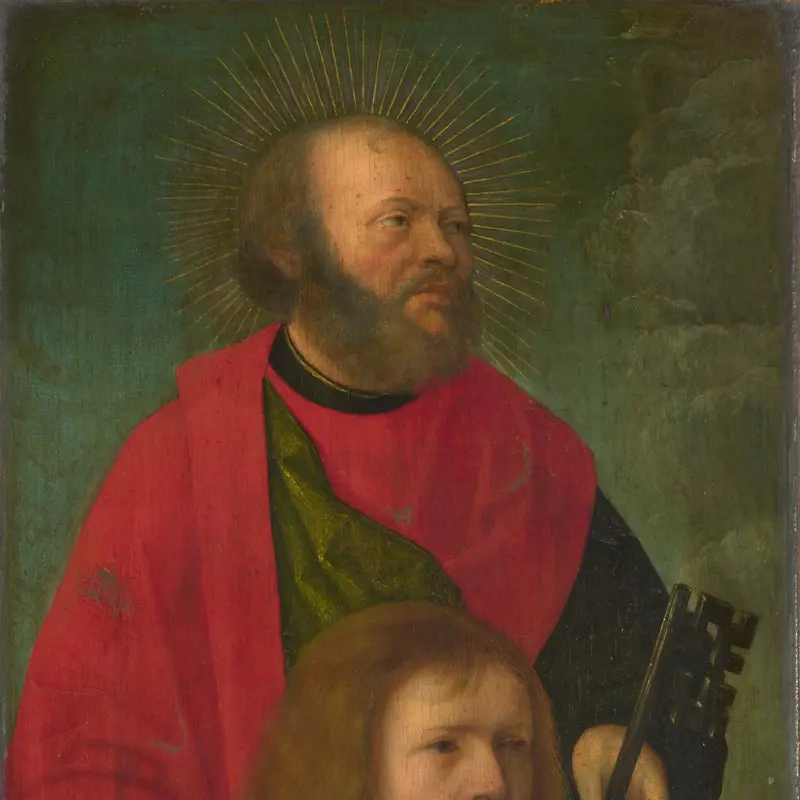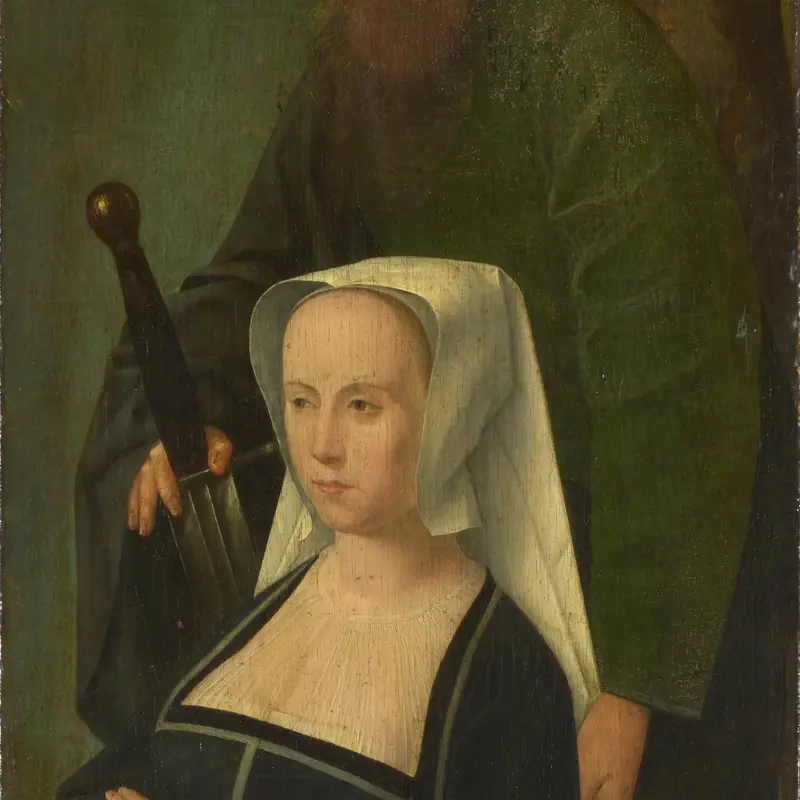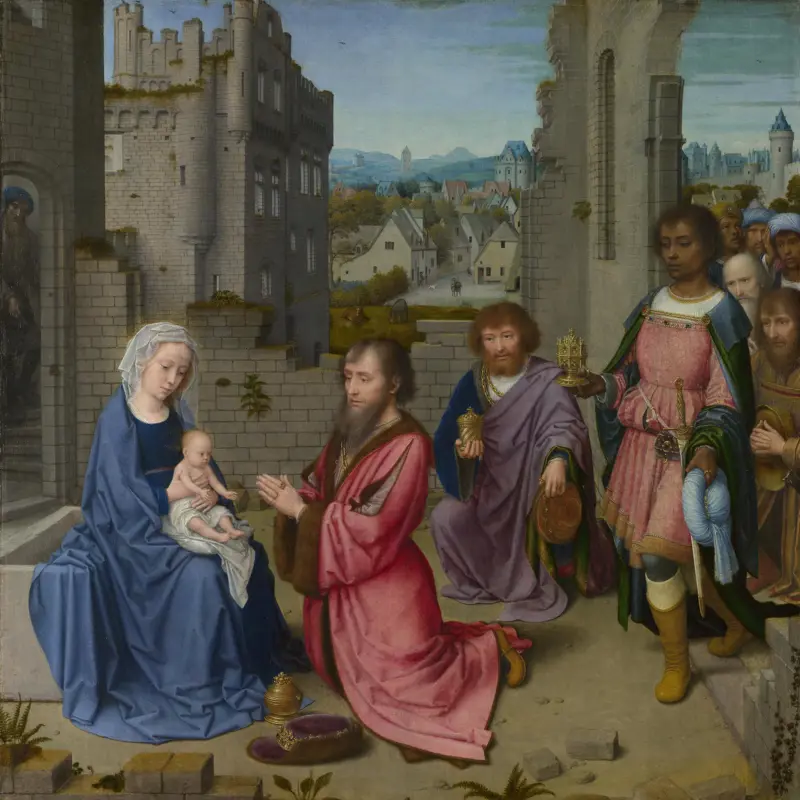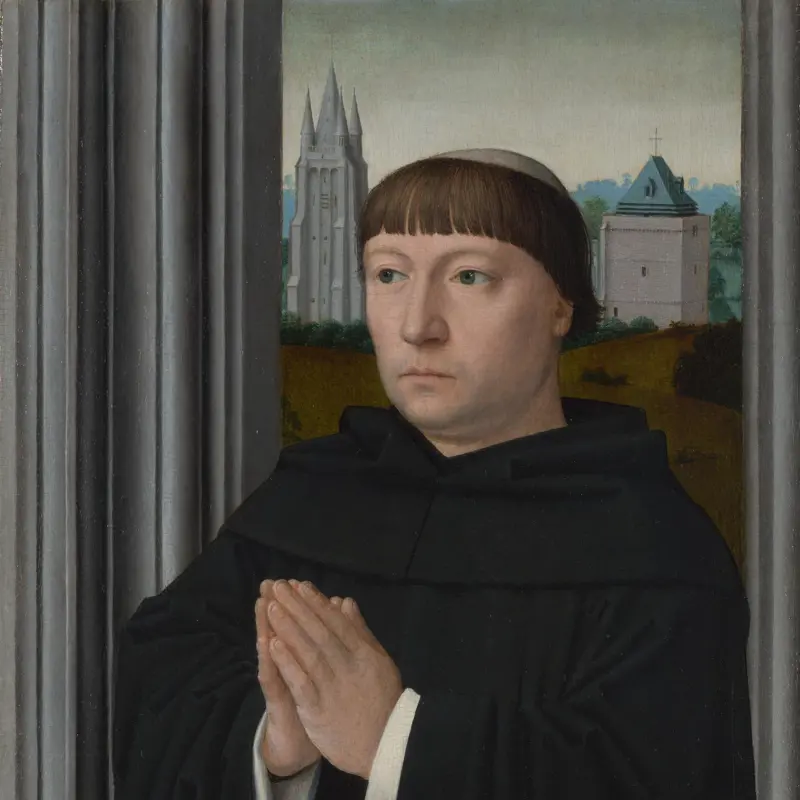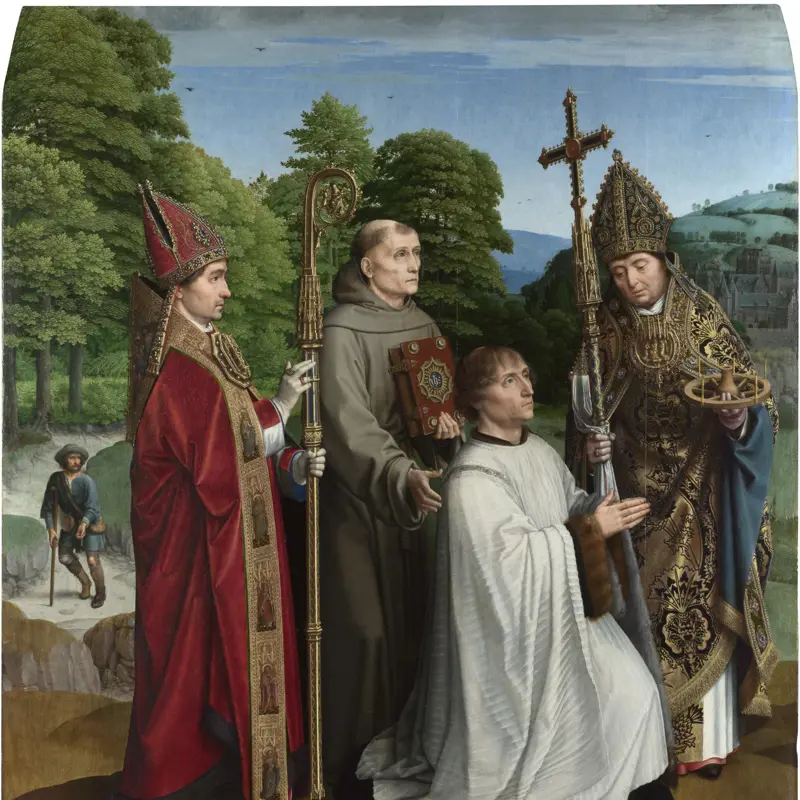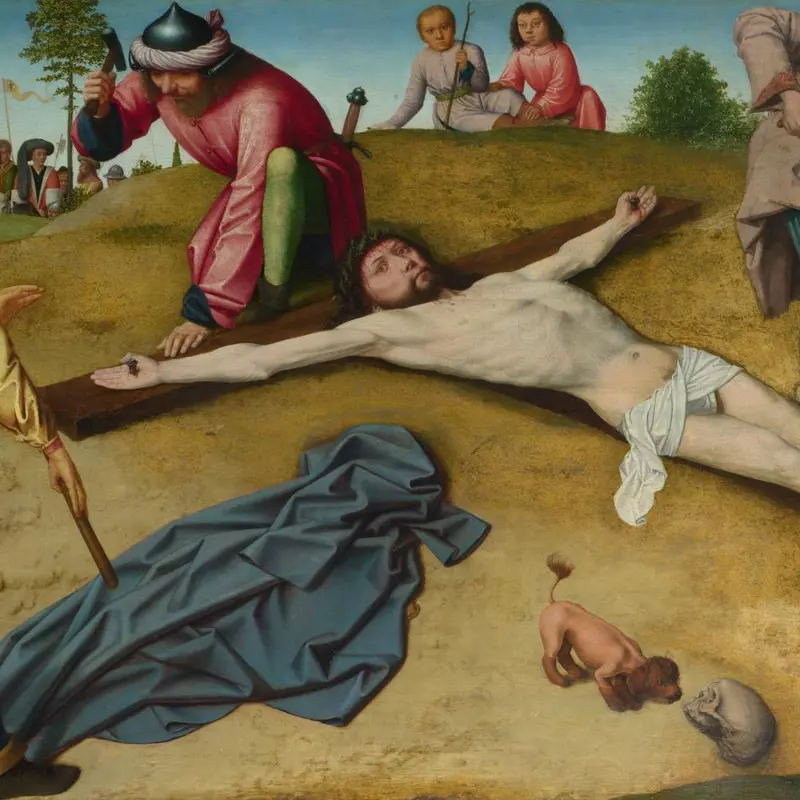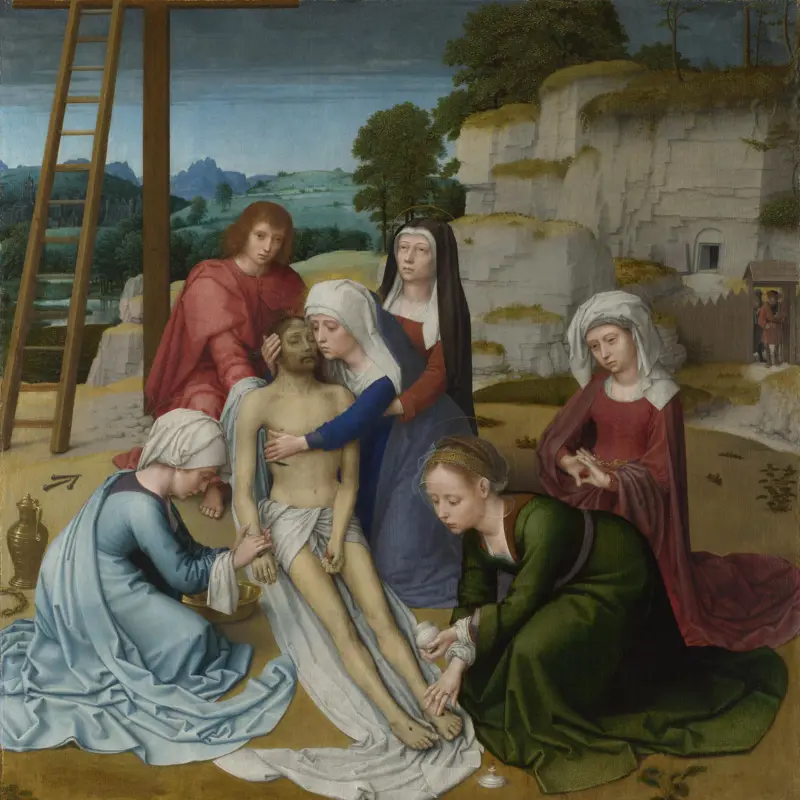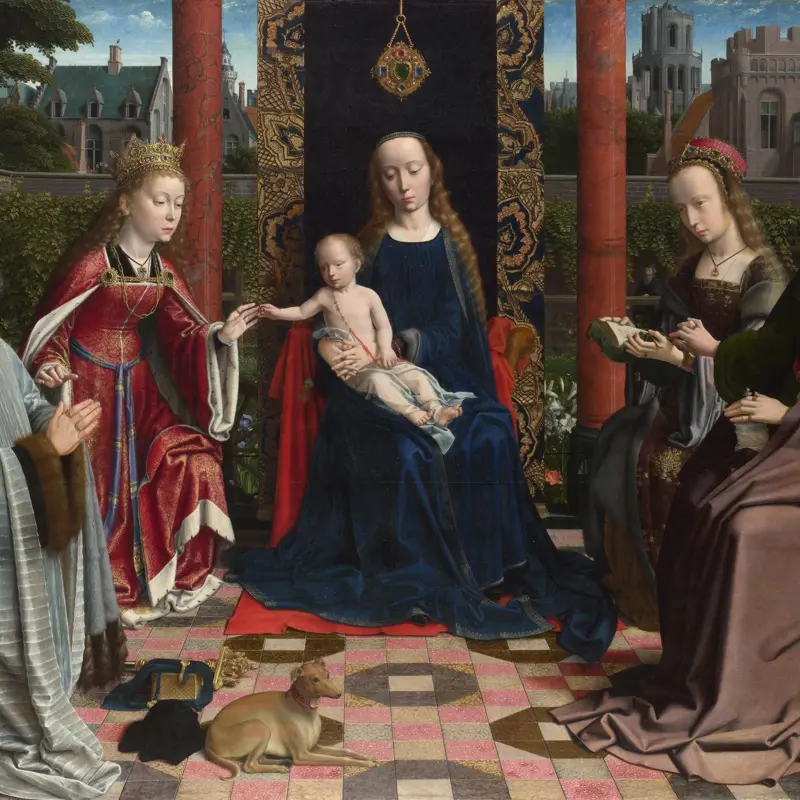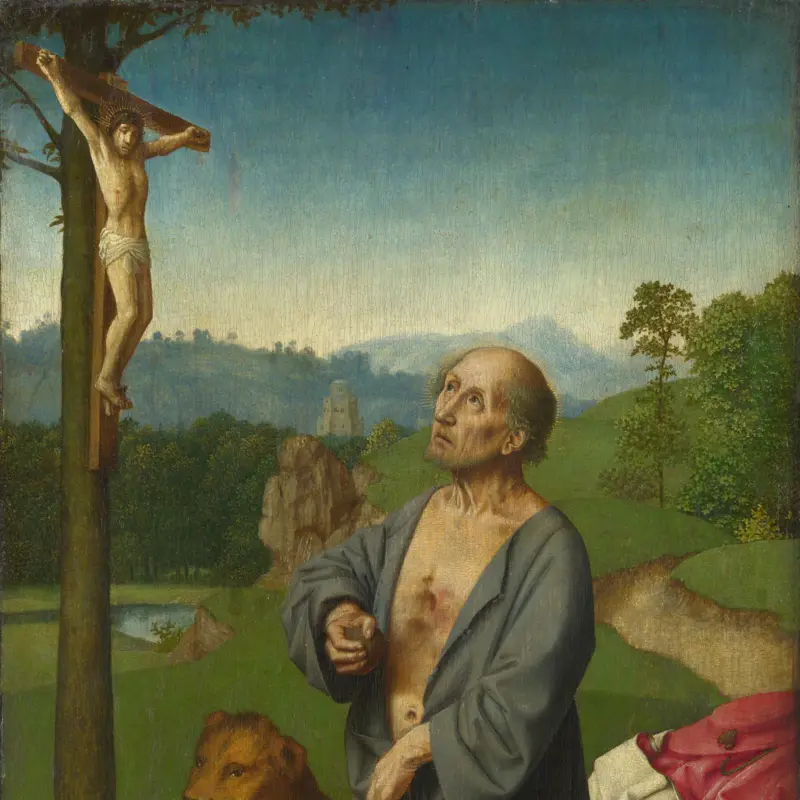Followers of Gerard David, 'Saint Paul and a Donatrix', probably about 1515
About the work
Overview
A well-dressed woman, hands folded in prayer, kneels in what was once the right wing of a triptych (a painting in three parts). Behind her is Saint Paul. The other wing, also in the National Gallery’s collection, shows her husband kneeling with Saint Peter. The central panel is missing, but it was presumably a scene from sacred history. We don't know who the two donors were, but they were clearly wealthy people.
On the back, visible when the altarpiece was closed, is Saint Nicholas of Myra, painted in grisaille (shades of black, white and grey) to look like a stone statue in a niche. The paintings on these wings were the work of several artists influenced by Gerard David, probably working in one of the larger Bruges workshops in around 1515.
Key facts
Details
- Full title
- Saint Paul and a Donatrix
- Artist
- Followers of Gerard David
- Artist dates
- Active 1484; died 1523
- Part of the series
- Two Shutters from a Triptych
- Date made
- Probably about 1515
- Medium and support
- Oil on wood (probably oak)
- Dimensions
- 81.2 × 26.4 cm
- Acquisition credit
- Bought, 1860
- Inventory number
- NG657.2
- Location
- Not on display
- Collection
- Main Collection
Provenance
Additional information
Text extracted from the ‘Provenance’ section of the catalogue entry in Lorne Campbell, ‘National Gallery Catalogues: The Fifteenth Century Netherlandish Schools’, London 1998; for further information, see the full catalogue entry.
Bibliography
-
1945Davies, Martin, National Gallery Catalogues: Early Netherlandish School, London 1945
-
1955Davies, Martin, National Gallery Catalogues: Early Netherlandish School, 2nd edn (revised), London 1955
-
1987Davies, Martin, National Gallery Catalogues: The Early Netherlandish School, 3rd edn, London 1987
-
1998Campbell, Lorne, National Gallery Catalogues: The Fifteenth Century Netherlandish Paintings, London 1998
-
2001
C. Baker and T. Henry, The National Gallery: Complete Illustrated Catalogue, London 2001
About this record
If you know more about this work or have spotted an error, please contact us. Please note that exhibition histories are listed from 2009 onwards. Bibliographies may not be complete; more comprehensive information is available in the National Gallery Library.
Images
About the series: Two Shutters from a Triptych
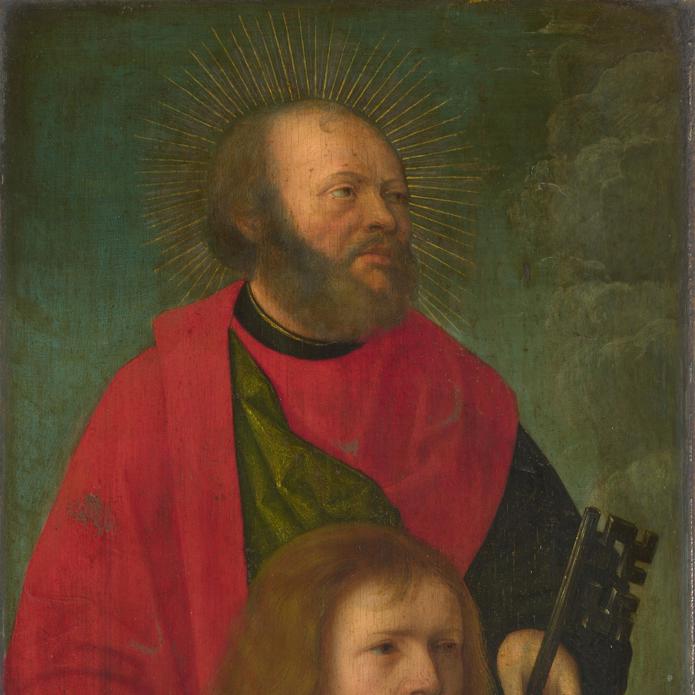
Overview
These paintings of a male and a female donor, probably husband and wife, once formed the wings of a triptych (a painting made up of three parts). They kneel in front of their patron saints, Peter and Paul.
We don't know who the couple were, but their clothing was fashionable in around 1515 and they were evidently wealthy: the woman has an expensive rosary of red and yellow beads, and a long train. She shows off large areas of costly furs in an open display of wealth.
The paintings seem to be the work of three artists, the most competent of whom drew and painted the donor. A second did the patron saints; the same artist, working quickly, or else a third, less talented, did the outside of the wings. All three were much influenced by Gerard David and were probably working in one of the larger Bruges workshops.

